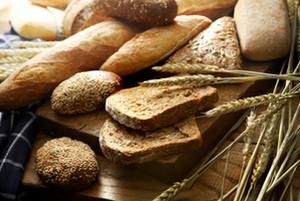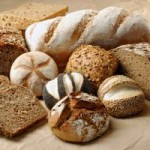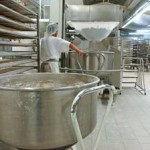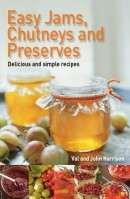An Introduction to Home Bread Making
Why Bake Your Own Bread?
 Bread is one of our staple foods and the supermarkets try to keep the price as low as possible since bread is an item that is easily compared from shop to shop. All loaves in the UK are sold in multiples of 400g, a small loaf being 400g and a large loaf of bread being 800g
Bread is one of our staple foods and the supermarkets try to keep the price as low as possible since bread is an item that is easily compared from shop to shop. All loaves in the UK are sold in multiples of 400g, a small loaf being 400g and a large loaf of bread being 800g
In the quest for lower costs, mass produced bread began to be made by a new process in the 1960s, which reduced the amount of time and labour involved. This process, known as the Chorleywood process, involved more mechanical input but also increased amounts of salt, sugar and the addition of chemical improvers.
Some people link this fundamental change in the bread making process with an increase in wheat (or gluten) intolerance otherwise known as Coeliac disease amongst the population in the UK.
There has been a small consumer revolt against this industrially produced bread, driven more by a desire for taste rather than plastic bread. Home bread making. This, of course, has been taken as an opportunity by the supermarkets to produce speciality and organic breads although they’re reticent to discuss the production methods. Those ‘instore bakeries’ often just take a chilled loaf and cook it rather than actually make it.
Cost Of Bread
You can buy traditionally produced bread from craft or artisan bakeries, but at a premium price, obviously. I’m afraid cheap prices are usually at the cost of quality and if you want decent bread you either pay the premium or make your own.
Having covered the health benefit of home bread making – the reduced salt and chemical inputs, rather than industrial bread, the next benefit is cost.
Save Money By Home Bread Making
Buying in your flour and other ingredients will save you money on buying bread from a shop. Yes, it will take time but not a lot. You can save time by batch baking and then freezing loaves for another day.
Since your own bread is not full of yummy preservatives, it will go stale more quickly and may grow mouldy faster. Makes you wonder how good that industrial bread is for you when even mould growth is slowed on it.
Because you can make whatever size loaf you wish, you can make your loaves to fit your daily needs. If you eat 300g in a day, then make 300g loaves.
Your own loaves will taste better than anything you can buy from the supermarkets, the traditional process enables flavour to develop that is replaced with added salt and enhancers in industrial bread.
Finally, you can’t beat the smell of baking bread. When you’re home bread making the whole house smells wonderful when it’s in the oven. So, time to see how easy it is – Baking Your Own Bread





